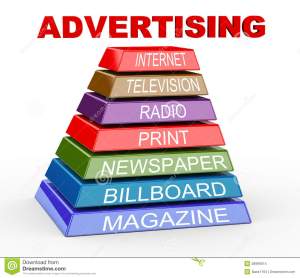VERY IMPORTANT: Some folks did not turn in the assignment that was due by midnight on Friday, January 19. That was your first grade for this quarter. What was that, you ask?
Here's the link:
http://journalism17-18.blogspot.com/2018/01/friday-jan-12-tues-jan-16-advertising.html
This is now worth 50 points.
Learning Target: I can evaluate a speaker’s point of view, reasoning, and use of
evidence and rhetoric,assessing the stance, premises, links among ideas, word
choice, points of emphasis, and tone used.
Coming up: critical vocabulary quiz on Thursday, February 1
In class: applying advertising techniques to print ads. See directions below. These are due by the close
of class on Tuesday, with the exception of those who receive extended time.
Critical vocabulary
Note: There will be a matching quiz on Thursday, February 1. This will count for a homework (10%) grade. If you have a lesson, make plans to take the quiz sometime on Thursday.
1.Loaded words
- Words with strong associations such as “home,” “family,” “dishonest” and “wasteful.”
- 2. Transference
- Attempts to make the audience associate positive words, images, and ideas with a product and its users.
- 3.Name calling
- Comparing one product to another and saying it is weaker or inferior in quality or taste.
- 4. Glittering generality
- Using words that are positive and appealing, but too vague to have any real meaning, like “pure and natural.”
- 5. Testimonial
- A product is endorsed by a celebrity or by an expert.
- 6. Bandwagon
- The advertiser tries to make you feel like everyone else has the product and if you don’t have it too, you’ll be left out.
- 7. Snob appeal
- The opposite of the bandwagon technique, snob appeal makes the case that using the product means the consumer is better/smarter/richer than everyone else.
- 8. Repetition
- A product’s name or catchphrase is repeated over and over, with the goal of having it stick in the viewer or listener’s mind.
- 9. Flattery
- The advertiser appeals to the audience’s vanity by implying that smart/popular/rich people buy the product.
- 10. Plain folks
- The advertiser says or implies that people just like you use a product. (This often takes the form of a testimonial.)
- 11. Emotional appeals
- The advertiser appeals to people’s fears, joys, sense of nostalgia, etc.
- 12. Facts and figures
- Using statistics, research, or other data to make the product appear to be better than its competitors.
- 13. Special offer
- The advertiser offers a discount, coupon, free gift, or other enticement to get people to buy a product.
- 14. Urgency
- The advertiser makes you feel like you need the product right away.
- ******************************************************
Assignment: Below you will find 25 creative ads. On a word document,
number 1-25
First: see if you can guess the sponsor; that is what is being advertised. Some are obvious, others not so much, so you might have to research.
Second: name the demographic audience. Think
carefully here about this.
Consider age, gender, economics,
ethnicity, geography and education. This is
complex, and many struggle with this. Think carefully. In order to receive
number 1-25
First: see if you can guess the sponsor; that is what is being advertised. Some are obvious, others not so much, so you might have to research.
Second: name the demographic audience. Think
carefully here about this.
Consider age, gender, economics,
ethnicity, geography and education. This is
complex, and many struggle with this. Think carefully. In order to receive
credit, all three parts must be complete..
Third: what persuasive technique (s) do you observe?
Select from the above.
Support this with specific evidence from the advertisement.
Third: what persuasive technique (s) do you observe?
Select from the above.
Support this with specific evidence from the advertisement.
_____________________________________________________________
1.
2
3.
4.
5.
6.
7.
8.
9.
10.
11.
12.
13.
14.
15.
16.
17.
18.
19.
20
21.
22.
23.
24.
25




































